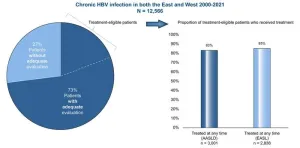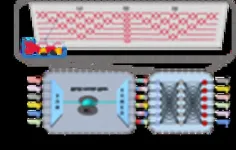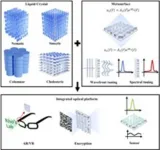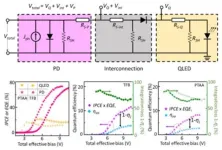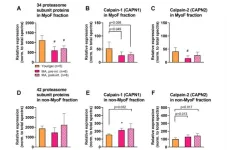(Press-News.org)
MIAMI, FLORIDA (May 1, 2024) – Patients in South Florida with metastatic melanoma will soon have access to the first cellular therapy for this advanced form of skin cancer, following its recent approval by the Food and Drug Administration (FDA). The therapy, known as tumor-infiltrating lymphocyte therapy, or TIL, uses patients’ own immune cells to battle their cancer. It will be available to patients at Sylvester Comprehensive Cancer Center at the University of Miami Miller School of Medicine as South Florida’s only center offering this treatment.
According to a Centers for Disease Control and Prevention (CDC) 2020 report, Florida has the second highest number of new melanoma cases per year in the U.S.
Additionally, Sylvester researchers will be part of an upcoming clinical trial led by TIL’s manufacturer, Iovance Biotherapeutics, to determine if certain modifications to the therapy can improve its effectiveness for even more patients.
Trials testing the TIL therapy, called lifileucel, before FDA approval showed a response rate of 32% among 153 patients. Lifileucel is approved for patients whose melanoma has progressed despite treatment with other forms of immunotherapy, including those involving checkpoint inhibitors, and targeted therapy for melanomas with a common mutation in the BRAF gene.
“Cellular therapy represents a major breakthrough in the battle against advanced melanoma,” said Jose Lutzky, M.D., skin-cancer specialist and director of Cutaneous Oncology Services at Sylvester. “The trial results offer hope to our patients with this potentially deadly disease.”
He added that in the clinical trial that led to lifileucel’s approval, more than half of patients who responded favorably to the therapy had maintained that response for over three years.
Although TIL therapy has been studied in labs and clinical trials for decades, lifileucel represents the first FDA approval for any TIL treatment.
Unleashing the Immune Response
Tumor-infiltrating lymphocytes are naturally occurring immune cells composed of a mix of white blood cells, T cells and B cells that invade tumors to try to fight them. To boost their natural cancer-killing abilities, TIL therapy involves surgically removing a patient’s tumor, isolating the lymphocytes within it and then growing them in larger quantities at a special manufacturing facility before reinfusing them into the patient.
Unlike other types of cell therapy, such as CAR-T cell therapy, the lymphocytes are not genetically engineered to recognize cancer because they are already attuned to the patient’s specific tumor. The TIL method also involves treatments after infusion to activate and stimulate the lymphocytes within the patient’s body.
Lutzky said the therapy, which typically includes surgery, high doses of chemotherapy before infusion and subsequent treatments can take its toll on patients, and those with heart conditions or other health problems may be unable to tolerate the treatment.
“These are not easy treatments, but many patients do have great responses,” he explained.
Upcoming Clinical Trial
Lutzky plans to begin enrollment for Sylvester’s participation in the phase 2 Iovance trial soon and hopes to enroll 10 or more patients in the next year. Eligible participants will be patients with advanced melanoma whose previous treatments failed against the disease.
The trial will test a variation of TIL therapy in which immune cells are genetically engineered to remove a gene called PD-1, which acts as a natural block on immune cell activity. Cancerous cells often hijack this process to switch off the body’s immune cells.
“Removing PD-1 from lymphocytes may enhance their cancer-killing ability in the body,” Lutzky said. “Laboratory studies and an early-stage clinical trial of these modified cells showed that they are just as active as the non-engineered lymphocytes.”
The Journey to Treatment Breakthroughs
Before joining Sylvester, Lutzky participated in clinical trials that led to FDA approval of another immunotherapy for metastatic melanoma -- a checkpoint inhibitor called ipilimumab. In fact, melanoma was the first cancer for which checkpoint inhibitors were approved as a treatment.
Because melanoma response is closely tied to the immune system, immunotherapies tend to work better with this cancer than other types. Moreover, lessons learned from treating melanoma with immunotherapy have enabled researchers and clinicians to apply those findings to fight other cancers, Lutzky said.
“Melanoma was the first tumor where checkpoint inhibitors were found to be effective and established what we now call the fourth pillar of cancer treatment, adding immunotherapy to surgery, chemotherapy and radiation,” he said. “It’s been a really amazing journey.”
on the InventUM blog and follow @SylvesterCancer on X for the latest on its research and care.
# # #
END
A recent study led by UC Davis Health researchers provides new insights into the molecular changes linked to the rare genetic condition 22q11.2 deletion syndrome, or 22q. It found unique biomarkers that could identify patients with 22q who may be more likely to develop schizophrenia or psychiatric conditions, including psychosis, which is commonly associated with 22q. The research was published in the journal Metabolomics.
People with 22q are missing a piece of chromosome 22 that contains more than 30 genes. This loss can lead to a variety of health challenges, ...
University of Central Florida College of Medicine researcher Renee Fleeman is on a mission to kill drug-resistant bacteria, and her latest study has identified a therapy that can penetrate the slime that such infections use to protect themselves from antibiotics.
In a study published recently in Cell Reports Physical Science, Fleeman showed that an antimicrobial peptide from cows has potential for treating incurable infections from the bacterium Klebsiella pneumoniae. The bacteria, commonly found in the intestines, is usually harmless. ...
Psilocybin - the active ingredient in “magic” mushrooms - is a more effective treatment for symptoms of depression than controls, providing further support for its potential as an antidepressant, suggests a study published by The BMJ today.
The researchers say the findings are encouraging but “further research is needed to clarify the factors that maximise psilocybin’s treatment potential for symptoms of depression.”
Depression affects an estimated 300 million ...
Global and regional analyses reveal persistent health differences between females and males across the 20 leading causes of disease burden (illness and death—quantified as health loss) over the past 30 years.
Overall, health loss is higher in males, particularly driven by premature death; but females, despite tending to live longer, endure higher levels of illness over their lives—underscoring the diverse and evolving health needs of men and women at different stages of their lives.
These health differences emerge in adolescence highlighting the importance of early interventions and measures to prevent the onset and exacerbation ...
A new Netflix documentary has recreated the face of a 75,000-year-old female Neanderthal whose flattened skull was discovered and rebuilt from hundreds of bone fragments by a team of archaeologists and conservators led by the University of Cambridge.
The team excavated the female Neanderthal in 2018 from inside a cave in Iraqi Kurdistan where the species had repeatedly returned to lay their dead to rest. The cave was made famous by work in the late 1950s that unearthed several Neanderthals which appeared ...
Amsterdam, May 2, 2024 – New evidence reveals global underassessment and undertreatment of chronic hepatitis B (HBV), especially among women and Asian minorities in the West, a new study in the Journal of Hepatology, published by Elsevier, details.
"In clinical practice we continue to see patients with advanced liver disease due to HBV despite having vaccines for prevention and excellent oral therapy for those who are treatment eligible. Simplifying and broadening HBV management is crucial," according to the researchers.
With the World Health Organization's goal to eliminate viral hepatitis by 2030 fast approaching, targeted outreach is needed to reduce new infections ...
A new publication from Opto-Electronic Advances; DOI 10.29026/oea.2024.230182 , discusses efficient stochastic parallel gradient descent training for on-chip optical processors.
With the explosive growth of global data volume, space-division multiplexing (SDM) technology has been emerged as a promising solution to enhance the communication capacity. Over the past few decades, SDM has been realized in few-mode fibers, multi-core fiber and free-space optical communication systems. However, all of above solutions face challenges of signal crosstalk because of the mixing between different channels during the ...
A new publication from Opto-Electronic Advances; DOI 10.29026/oea.2024.230216 , discusses liquid crystal-integrated metasurfaces for an active photonic platform.
In the field of optical science, the exploration of metasurfaces has garnered significant attention over the last few decades. Metasurfaces represent a sophisticated evolution of traditional optical components, comprising nanostructures meticulously arranged to enable precise control over light manipulation. These nanostructures function as building blocks, allowing for the creation of lenses with unique ...
A new publication from Opto-Electronic Science; DOI 10.29026/oes.2024.230029 discusses unraveling the efficiency losses and improving methods in quantum dot-based infrared up-conversion photodetectors.
Traditional infrared imagers are usually constructed by bonding an infrared PD with each pixel of a thin film transistor (TFT)-based active-matrix backplane. A feasible way to avoid the costly pixilation is to use infrared up-conversion photodetector, in which an infrared photodetector (PD) and a light-emitting diode (LED) with large effective areas are back-to-back ...
“Resistance training can reverse certain aspects of skeletal muscle aging.”
BUFFALO, NY- May 1, 2024 – A new research paper was published in Aging (listed by MEDLINE/PubMed as "Aging (Albany NY)" and "Aging-US" by Web of Science) Volume 16, Issue 8, entitled, “A novel deep proteomic approach in human skeletal muscle unveils distinct molecular signatures affected by aging and resistance training.”
The skeletal muscle proteome alterations to aging and resistance training have been reported in prior studies. However, ...





